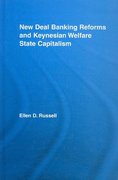Question
A school is overcrowded and there are three options. The do-nothing alternative corresponds to continuing to use modular classrooms. The school can be expanded, or
A school is overcrowded and there are three options. The do-nothing alternative corresponds to continuing to use modular classrooms. The school can be expanded, or a new school can be built to "split the load" between the schools. User benefits come from improvements in school performance for the expanded and new schools. If a new school is built, there are more benefits because more students will be able to walk to school, the average distance for those who ride the school buses will be shorter, and the schools will be smaller and more "student friendly". The disbenefits for the expanded school are due to the impact of the construction process during the school year. The interest rate is 8%, and the life of each alternative is 20 years. Which alternative should be chosen? What is the incremental benefit-cost ratio for each alternative?
| Alternative | Expand | New School |
| User benefits/year | 2,100,000 | 3,100,000 |
| User disbenefits | 800,000 | 0 |
| Initial cost | 8,800,000 | 10,400,000 |
| O&M cost/year | 950,000 | 1,700,000 |
(a) Use the conventional benefit-cost ratio (b) Use the modified benefit-cost ratio (c) Use the governmental benefit-cost ratio
Step by Step Solution
There are 3 Steps involved in it
Step: 1

Get Instant Access to Expert-Tailored Solutions
See step-by-step solutions with expert insights and AI powered tools for academic success
Step: 2

Step: 3

Ace Your Homework with AI
Get the answers you need in no time with our AI-driven, step-by-step assistance
Get Started


